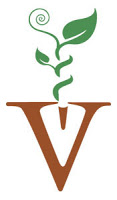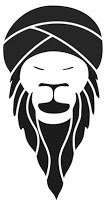Fuse Speaker Spotlight: Author Maggie Macnab on Design By Nature
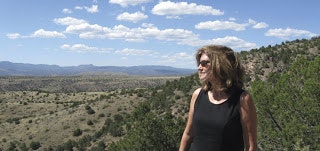
As we look forward to Fuse 2012 we'll be featuring some of our exciting speakers here on the blog.
Keynote Maggie Macnab, Designer, Macnab Design, Educator, UNM and Santa Fe University of Art and Design; Author, 'Design by Nature</i' and 'Decoding Design</i' will be presenting "Remembering What We Know" on Thursday, April 19th, 2012. Back in January, we posted a video of Maggie speaking about her most recent publication and now we are pleased to present an interview with Macnab diving deeper into the subject as a prelude to her session at Fuse.
First off, you have a new book out called 'Design by Nature,' can you tell us a little bit about that and what inspired you to write it?
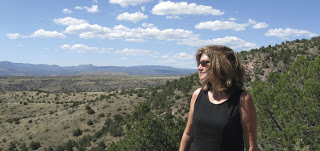 |
|
Maggie
outside of Silver City, New Mexico at the edge of the Gila Wilderness, 2009 (Mark Coble, New Mexico). |
I grew up primarily in New Mexico, a gorgeous place that includes everything from hot, sandy deserts filled with reptiles and birds to towering pines standing sentry over the cool, silent mountains. New Mexico's skies spread out all around you and go on almost forever. I have never been able to justify sacrificing my quality of life to make more money in a more densely packed market. I was always a 'nature-lover,' having been introduced to it as a way of life by parents who took me camping and horseback riding from my earliest memory.
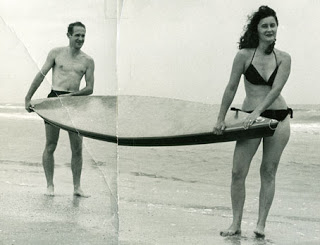 |
|
Maggie's
Bohemian parents, Arden and Sandy Macnab. Galveston, 1956. Sandy built the surfboard (oh, how far we've come!). Collection of M. Macnab. |
My dad was an architect and artist and had me drawing from nature at a very early age. He also read science fiction shorts as bedtime stories, which I loved. My sights were set beyond experiencing the everyday world in an everyday way very early on. My earliest interactions with nature, art and a love of exploring were extrapolated into my design work from the beginning. Nature has always been a touchstone for me. Nature is honest and direct, two qualities that are very important to me, and it became my mentor early on. I have always wondered how things work in nature: why a bug looks the way it does, or why a rainbow is so elusively beautiful. Nature is an incredibly available classroom, has all the materials, and is a patient teacher when we allow it to be.
My early experiences set me on a lifetime path of trusting nature implicitly as an adult while questioning some of the human systems that present themselves as 'true', 'valuable', or 'necessary' while simultaneously going counter to it. As a designer, looking into nature for solutions always returns a diverse range to choose from. As a teacher, I have an endlessly inspiring resource with which to instruct students. As a human, I have a deeper appreciation for life and for the world I live within.
You'll also be discussing that topic some at Fuse this year, and the title of your session is 'Remembering What We Know' ' what does that title mean, and why did you choose it?
I'm not addressing conscious memory in the title as much as memories of the thousands of previous generations who lived in direct contact with nature, studied it and had a depth of understanding of how it works. Experiential 'memory' is contained in our genetics, and even though modern culture is far removed from such a direct experience of nature, it is the common denominator of all humanity and provides an eternal and internal gauge of who and where we are. It lasted far longer than our short introduction to information age technology. But because the modern world overrides our intuitive experience of nature with an inordinate amount of human systems'educational, political, religious'directing our most intimate and personal interpretations and responses, I thought it important to remind people that we come into the world whole and complete. We don't need to be told what to think. We arrive fully prepared to unfold through our individual experience of relationship as we move through life when given the appropriate support for the physical, emotional, spiritual and intellectual aspects of our being. The ability to spontaneously 'unfold' as life progresses is known as an 'emergent property.' It is an inherent property of all life. A fertilized egg doesn't need to be told to divide into cells that migrate into their appropriate positions and become an organ, a blood or nerve cell'it simply does whatever is needed in the moment.
 |
|
Banking
and financial logos typically have corners instead of curves to describe precision, efficiency, stability and security. |
Can you give some examples of forms in nature that are echoed in design?
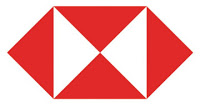 I've been recognized for my logos for over 30 years, but it was teaching critical thinking for the last 15 that helped to pull the subliminal into awareness so that I could understand how certain universal relationships can be effectively integrated into design to queue the message for its audience. These principles and forms are understood by all people'in all cultures and eras'in approximately the same way. Like most designers, I had always done this intuitively, but because I teach I had to understand the process to convey it to my students.
I've been recognized for my logos for over 30 years, but it was teaching critical thinking for the last 15 that helped to pull the subliminal into awareness so that I could understand how certain universal relationships can be effectively integrated into design to queue the message for its audience. These principles and forms are understood by all people'in all cultures and eras'in approximately the same way. Like most designers, I had always done this intuitively, but because I teach I had to understand the process to convey it to my students.
For example, the compact, angular shape that most bank logos take on directly addresses their necessity to convey security, efficiency, precision and stability. This is why you rarely see a spiral as a bank's logo (and, in fact, logos with corners are far more dominant than curves in industries that have to do with money because angles describe precision).
It just wouldn't fit the message in an intuitively accessible way. The spiral, on the other hand, works very well for non-profits or organizations that are focused on human-centric services.
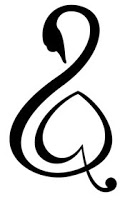 |
| Swansongs, a non-profit musicians' collective in Austin, Texas, provides music by request for those transitioning into death (Maggie Macnab, 1999). |
The spiral shape in nature, not coincidentally, is associated with connecting and regenerating energy'and its creative function is described directly by its shape. A logarithmic spiral connects varying diameters of circles into a smoothly and geometrically progressed spiral shape that grows geometrically outward, just as you see in an unfurling seed sprout, a nautilus, or an embryo of any vertebrate animal (or human). Each circle is whole, autonomous and contained within itself (exactly as its form describes), and the spiral is constructed by connecting these whole pieces of energetic information into a single and continuously expanding curve.
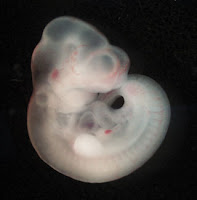 |
|
Embryonic
stage of a mouse (Credit: Seth Ruffins, Biological Imaging Center, California Institute of Technology, Pasadena). |
Non-profits who serve human interests connect individuals with services that support and vitalize them, increasing the probability that the individual will be able to contribute themselves with more productivity and usefulness within their community by expanding themselves into it.
And, sound design principles are universal: the way permaculture designers approach landscaping high food yields from arid climates is to maximize the relationships in nature for the most benefit with the least impact.
By observing nature and designing what works from the broadest patterns to the finest details permaculturists are able to create functional, high value landscaping that produces a higher yield of better quality food, and holds more water by maximizing nature's patterns into details of relationship. Design provides a similar yield by appropriately using gestalt principles, visual and typographic conveyances, and elements such as color and empty space to support the user's experience without a lot of work on their end in understanding the message.
When we experience nature, we experience elegance in its most immediate and seamless delivery. Everything in nature has a function because it has a relationship, all while having absolutely no waste. Visual communication can provide the same service to its audience by making relationships and not wasting the viewer's time.
You've been critical of the educational system; and left school early to begin working yourself, how do you think the educational system could change to encourage more creativity?
Firstly, let me say that teachers and farmers are my heroes. Feeding the mind and body are the most noble of pursuits. But the mainstream educational systems that dominate our culture today are limited in their usefulness for the issues we are facing. What is the sense of teaching math but not music? Or science instead of art, rather than as well as? All of these areas are complimentary and understanding their relationships set the stage for better, more comprehensive, more creative, and more effective problem solving. Standardized testing does nothing to support creative, critical thinking. Why would a multiple choice question carry more weight than an exploratory, eccentric one that might hold a very unexpected but appropriate solution? Children are taught the single answer is the acceptable one. That's not the way nature works and that's not the way humans work. Wonder is one of most important qualities you can support and encourage in a child. Human beings excel in asking questions and as a result we come up with diverse options as solutions. Thinking creatively is applicable in almost any situation and its value spans a lifetime. It provided infinite possibilities for my future by opening up an authentic interpretation of my personal experience rather than trudging along the well worn path of regurgitated ideas (no thanks!).
I encourage my own students'who are typically young adults and for the most part internationals'to seek out work that they have an affinity and passion for. It's great to do work for good money, but money can't be the ultimate benchmark of success, particularly when design is a discipline that is so entwined with personal sensibilities'both of the designer and the audience.
Designers have to see the big picture and interpret how to effectively create relationships to be good at what they do. Designers have exactly the kind of thinking we need right now by using both sides of the brain in balance. We're in a place that requires very creative solutions to some very big problems. As Einstein said, the systems that created the problems cannot solve them. This means all possible solutions on the table from all kinds of sources. We need people who can think well beyond what they've experienced and trust themselves to go into unknown territory. The implications of this sort of problem solving goes well beyond graphics or advertising, of course, but the great thing is this approach works perfectly for great design, too!
For those working in the field, what are some ways they can work on reconnecting with nature and intuitive design?
One of the most common design mistakes is not appropriately matching the visual to the message. Subsequently, these messages are dismissed by the viewer as having false or valueless information. This happens almost instantaneously because we've been reading nature's language for millions of years and our filters are quite effective. Appropriate matching of nature's language to your message gives it a much higher likelihood of creating a relationship with the viewer, which increases the probability of noticing it in the moment and retaining it in the future. And design isn't decoration. The best design is deeply engaged with its message. Designs that are seamless and without discernable effort are the most beautiful and effective. Beauty is a quality can't be absolutely defined, but we all know it when we see it, and is appreciated universally. Just as in nature, aesthetics have a very specific purpose: they help to describe the value of a function. Designers can see the function of the message and use universal principles to introduce it to the audience. Naturally, this works very well for global communications; regardless of where you declare your allegiances, we are all humans walking the earth, first and foremost.
 |
|
We don't
know what this is, but there is no doubt it is deeply lovely, sensual and moving (Cristian Boian, Romania) |
The primary intention for the book is to create better ('better' being more aesthetic and more useful) design'I'm a communication designer so graphics are the dominant theme of the book, but design is just about the broadest profession there is and includes all related disciplines: the built world, product, industrial and environmental design. All design disciplines use the same universal principles. The secondary intent is to bring the individual's awareness of nature up a notch or two and encourage their own hands-on interaction with it. It's hard to understand the disconnection we have from nature. This lack of awareness degrades life and all we generate, including design. It seems like an obvious statement, and yet we live in a world that continually disregards the sanctity of nature and its essential necessity to our survival. We're swimming in redundant, junk information instead of learning from nature's elegant solutions and putting beauty into the world. My mission is to teach others to not contribute to meaningless noise'beginning with looking for design solutions right outside your door.
For
more information visit www.designbynaturebook.com. To learn more about the session and Fuse 2012, download the brochure.
Plus, stay in touch for more conference news and industry updates by joining our communities on LinkedIn, Facebook, or Twitter.
